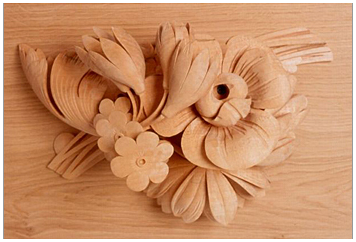Woodcarving, the art of transforming a simple block of wood into a stunning masterpiece, offers a captivating outlet for artistic expression. But with a vast array of styles and techniques at your disposal, embarking on your woodcarving journey can feel overwhelming. Fear not, aspiring carver! This guide will equip you with the knowledge to select the perfect style that aligns with your artistic vision and skill level.
Exploring the Spectrum of Woodcarving Styles
The beauty of woodcarving lies in its diversity. From the meticulous detail of chip carving to the bold shapes of chip carving, each style presents unique challenges and rewards. Here's a glimpse into some popular styles to pique your interest:
- Chip Carving: This delicate style involves removing tiny chips of wood to create intricate geometric patterns and designs. Perfect for creating decorative panels or small ornaments.
- Relief Carving: This technique creates a three-dimensional effect by carving figures or designs that project from a flat background. Relief carvings can range from simple silhouettes to highly detailed scenes.
- Carving in the Round: This involves sculpting a three-dimensional object entirely from a single piece of wood. This style allows for the creation of realistic figures, animals, or even abstract shapes.
- Chip Carving: Characterized by removing slivers of wood to create negative space designs, chip carving results in beautiful openwork pieces. Ideal for creating decorative wall hangings or frames.
- Stumpy Woodcarving: This whimsical approach utilizes pre-existing features of a root or stump, transforming them into captivating characters or creatures.
Considering Your Artistic Preferences
Choosing a woodcarving style goes beyond just aesthetics. Here are some key factors to consider to ensure a fulfilling experience:
- Level of Detail: Do you crave intricate work or prefer bolder, more stylized pieces? Chip carving and relief carving offer intricate detail, while car in the round and stumpy woodcarving often involve broader shaping.
- Project Time Commitment: How much time are you willing to invest in a single project? Chip carving and detailed relief carving can be time-consuming, while simpler styles like stumpy woodcarving may be quicker to complete.
- Desired Outcome: What do you envision creating? If you dream of realistic sculptures, car in the round might be ideal. For decorative accents, chip carving or relief carving could be perfect.
- Artistic Inspiration: What kind of art resonates with you? Look at existing carved pieces to discover styles that spark your creativity.
- Personal Skills and Dexterity: Consider your comfort level with detail work and hand-eye coordination. Chip carving requires a steady hand and meticulous attention, while stumpy woodcarving allows for a more free-flowing approach.
Gearing Up for Your Woodcarving Adventure
Once you've identified a captivating style, it's time to gather the necessary tools and materials. Here's a basic starter kit to get you carving:
- Wood: Choose a wood suitable for your chosen style. Basswood is a popular option for beginners due to its softness and ease of carving.
- Carving Knife or Chisels: A sharp carving knife or a set of chisels in various sizes are essential for shaping the wood.
- Mallet: A mallet helps drive the chisels into the wood for controlled carving.
- Sharpening Stone: Maintaining sharp tools is crucial for safety and efficient carving.
- Safety Gear: Protect your eyes with safety glasses and wear gloves to prevent cuts.
Consultation:
Feeling overwhelmed by the options? Don't hesitate to consult with experienced woodcarvers! Online forums, woodcarving clubs, or local woodworking shops can be excellent resources for guidance and inspiration. Seasoned carvers can offer valuable insights into choosing a style, selecting tools, and navigating the learning curve. So, don't be afraid to reach out and connect with the woodcarving community!

